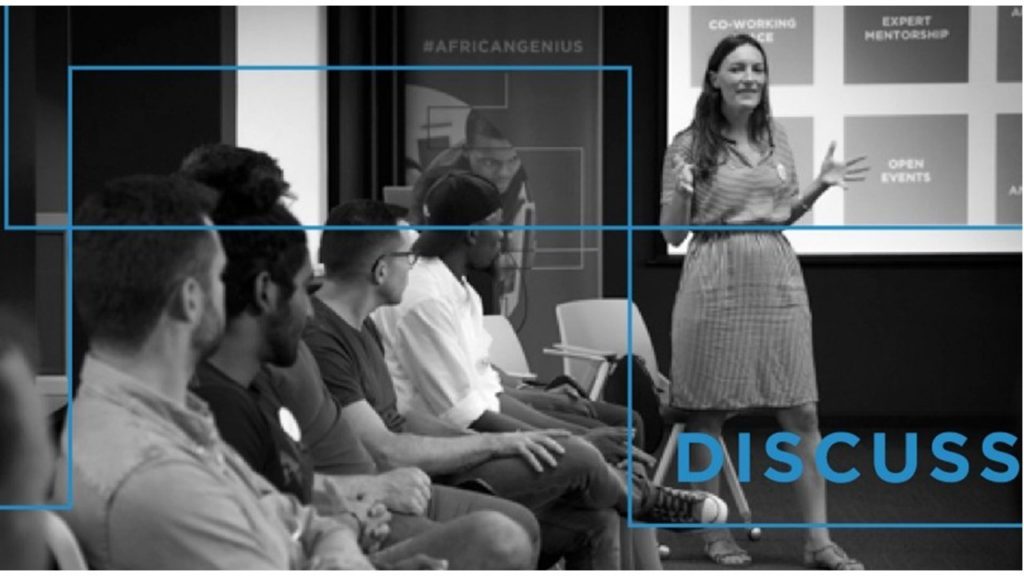Traditionally, a business would build a product and hope to find customers who want to buy it. Aggressive marketing tactics would hook consumers who, faced with few other choices, would respond accordingly. The company would corner the market and move on to building the next product.
While many organisations built their reputations in this way, the sands of the business environment have shifted over recent decades. Business is no longer business as usual. Markets — and competition — are global, the cost of development has plummeted, and technology has accelerated the rate of innovation. The risks inherent in ‘build first, find customers later’ are too high. Businesses need to find a new way of working.
In response, two approaches have gained more prominence in the way they influence the way organisations innovate: design thinking and lean startup.
Fail fast, fail cheaply
“Both approaches take an idea to product in the fastest way possible, but the key difference is where the product appears in the innovation cycle,” says Richard Perez, director at the Hasso Plattner Institute of Design Thinking at the University of Cape Town.
In design thinking, the approach is to first establish the need for a product or service; understanding a customer’s underlying problem, rather than presenting them with a solution built from the developer’s vision-based assumptions. Design thinking emphasises user desirability and identifies potential blind spots within the founder’s understanding, or assumptions the founder is making.
Ultimately, the approach helps entrepreneurs understand what is required to validate their vision before entering into costly development cycles.
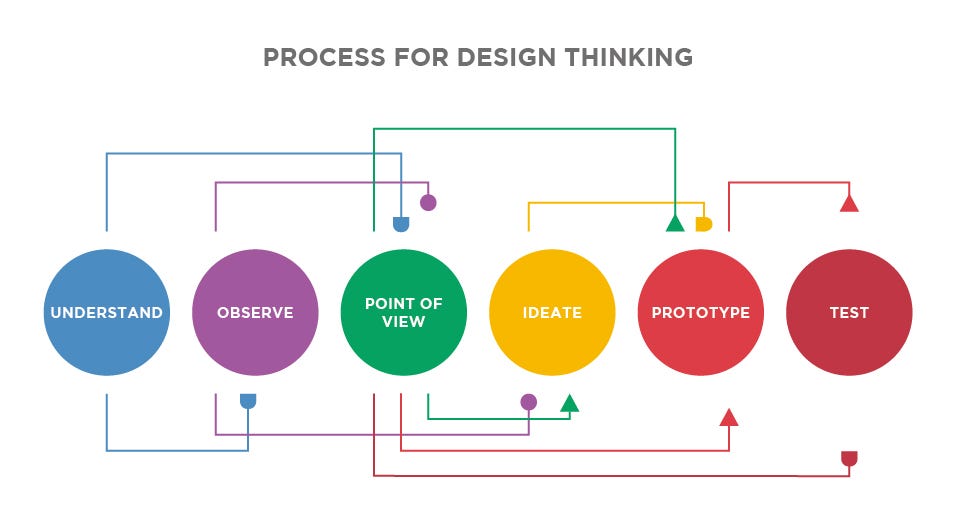
Source: Plattner, H., Meinel, C. & Weinberg, U. 2009, Design Thinking, 2009
Perez continues: “The discovery phase is critical in design thinking. Most of the work is focused on developing a human-centred understanding of the problem before going into solution mode. With lean startup, the philosophy is to build fast, test and pivot.”
The lean startup approach is to begin with a minimum viable product, and make small, fast incremental changes to evolve the design after receiving feedback from the users.
David Campey, co-founder of Afrolabs and Lean Iterator, which helps to prepare early-stage startups for investment-readiness, explains in more detail: “The lean startup approach is about reducing risk, which sometimes requires changing an idea on the spot.” Lean startup is formed from a combination of customer development, which offers a way to find, test and grow customers; and Agile product development, which helps founders build products iteratively.
Quoting Eric Ries, author of The Lean Startup, Campey describes the startup process as “build, measure, learn.” A founder has an idea, or a hypothesis. He or she will find a way to test the idea. They may phone their friends, or place an ad on Google asking for people’s opinions of the idea, for example. That feedback influences what happens next. If people like it, the founders will implement incremental iterations. If people reject the idea, the founder pivots, either changing the product or finding a new market for it.
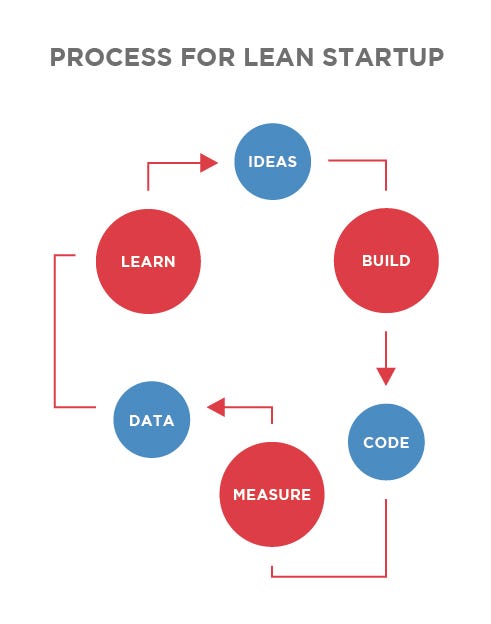
Source: The Lean Startup, Eric Ries, 2011
Neither approach is incorrect. However, there are some fundamental differences that make one approach more appropriate for founders than another.
Different perspectives
“The hidden gem of design thinking is the multidisciplinary team,” says Campey.
Perez agrees: “Design thinking helps to break down silos across corporate departments. With multiple disciplines around a table, it’s possible to bring new perspectives to a problem within a structured framework for working together.” This is an immersion process that takes time to establish the desirability, feasibility and viability of a product, grounded in the needs that have been identified.
By contrast, says Campey, “Lean startup is about minimising waste, so you’ll have say two or three founders working to develop a product. They will work to prove an idea. Hopefully this leads to investment, which will allow them to prove other ideas. Through this validated learning, the team grows over the time as the product and business develops.”
Campey does caution, however, that “a startup is not a small corporation. Lean startup represents a fundamental business shift to reducing risk, proving ideas and continually iterating.”
Both approaches can work
In truth, it is possible to apply both approaches when developing a product. Both are rooted in understanding the underlying need. They’re both human-centred, respond to feedback and take the product through multiple iterations and testing cycles.
However, the choice of which approach to use and when to apply them depends entirely on the founder’s focus: do they want to build the product, test and pivot; or do they want to let the problem take the lead before the product exists?
Considering the life cycle
Starting the innovation cycle with an understanding of what is motivating and driving a founder helps identify potential blind spots and biases.
Through our work with entrepreneurs, at the Solution Space we have developed a Solution Lifecycle Framework, which helps founders better understand their approach to building new solutions, based on where they are in the innovation cycle. Adapted from IDEO CEO Tim Brown’s diagram showing three criteria for successful innovation — Desirability, Feasibility, Viability — the framework contains a fourth criterion: Reliability. This places emphasis on the people and team behind the innovation.
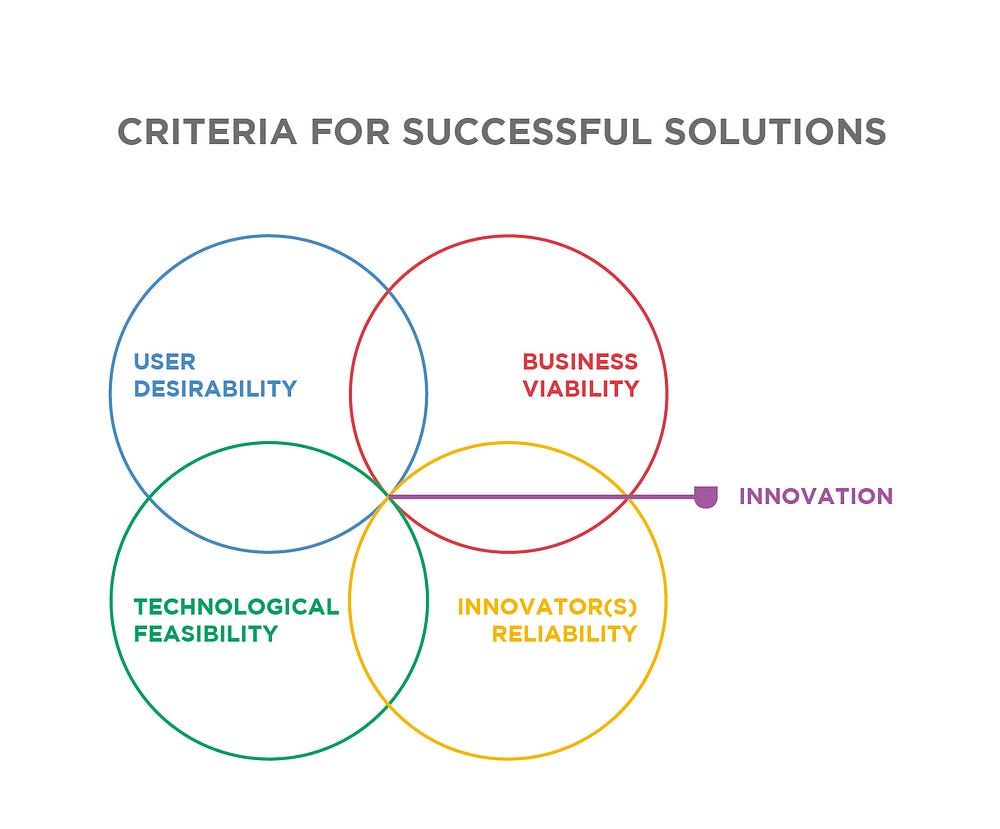
In describing the structure of the framework, Sarah-Anne Arnold, Manager of the Solution Space, emphasises the importance of reflecting on the founder’s relationship with the problem they are trying to solve. “Founders need to be honest in their self-assessment of whether they are in love with the problem or the solution. We often see entrepreneurs who are in love with their solution focusing on the technological feasibility of the product, but who ignore the user feedback that is critical to establishing whether the customer wants their product at all.”
When founders understand that they’re more in love with the solution, we have seen them re-orienting themselves. They ask: “what do we need to learn to test our assumptions and better understand the job our customer is hiring our product to do?” When they reach that point, they are able to focus on measuring and building solutions to avoid costly iterations and development cycles. This shift allows the solutions to continually place their customer at the centre.
